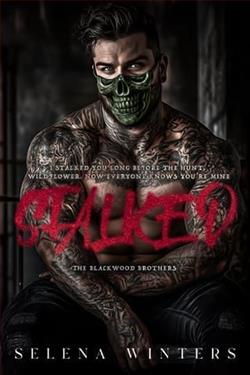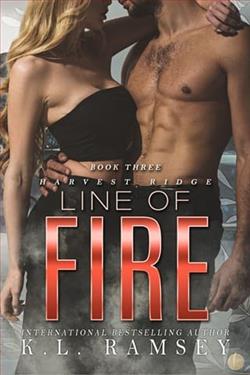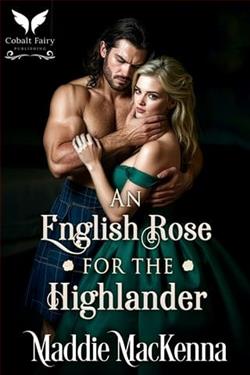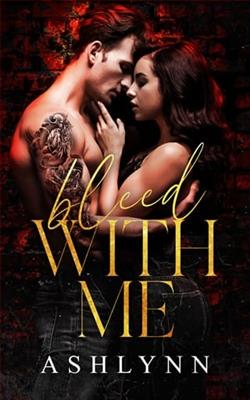Page 7 of Traitors Gate
‘Not a hope,’ said William firmly. ‘It’s not me who’s been chosen to represent the school. This has to be your work and yours alone, otherwise I might as well collect the prize.’
‘I’ll have to ask Uncle Ross,’ Artemisia whispered to her brother. ‘I once overheard Dad telling Mum there are no rules left for him to break.’
• • •
Once the children had been packed off to school the following morning, Beth began to open the mail. Bills, circulars, and one letter that needed to be read a second time.
‘What are you doing this weekend?’ she asked.
William put down his paper and thought for a moment. ‘I’m on the duty rota. It’s my one in four. Ross is taking the children to Legoland, it’s the new rage,’ he added as he buttered a second slice of toast. ‘And you?’
‘I was planning to visit the Fitz and see how much it’s changed since I left. But I’m now thinking of driving to Buckingham and visiting an old lady I’ve never met before.’
‘Sounds intriguing,’ said William. ‘So far the only clue is the envelope you’re still clutching.’
‘It’s from a Mrs Eileen Lomax, the widow of Gordon Lomax, a West End art dealer who died last month,’ said Beth. ‘I sent her a letter of condolence and she’s replied thanking me and asking if I could visit her as she needs some advice on a private matter.’
‘I need more clues,’ said William as Beth removed two eggs from a saucepan of boiling water and dropped them into the egg cups in front of him.
‘Lomax owned one of the most successful galleries in the West End but, following the collapse of the market for Dutch landscapes, it’s thought he wasn’t doing much better than breaking even.’
‘Death, debt and divorce, as you so often remind me,’ said William, ‘are the art dealer’s best friends.’
‘And two of those might well apply in Gordon Lomax’s case. So I think I’ll put off my planned visit to the Fitz and make the journey to Buckingham instead. Gordon was very kind to me when I first joined the art world so it’s the least I can do.’
‘And to think you could have gone to Legoland with Ross and the children,’ teased William, picking up a teaspoon and cracking his egg.
‘Perhaps I’ll find a Rembrandt or a Vermeer gathering dust in her attic,’ said Beth as William removed the top of his egg to find it was hard-boiled.
CHAPTER 3
THEIRISHSTATECOACH, PULLEDby a team of four greys and escorted by a guard of honour, clip-clopped out of the palace gates and onto the Mall as Big Ben struck eleven.
Her Majesty the Queen, in lilac silk and wearing a diadem, sat on one side of the carriage, while the Duke of Edinburgh sat bolt upright opposite her, bedecked in the uniform of an Admiral of the Fleet, one hand resting on his sword. Ahead of them trundled Queen Alexandra’s State Coach, carrying the royal regalia – the Imperial State Crown, the Sword of State and the Cap of Maintenance, accompanied by a dozen mounted officers from the Household Cavalry with the Blues and Royals acting as the Queen’s ceremonial bodyguards.
Large crowds had gathered along the Mall to view the spectacle. Some had been waiting for hours to secure a place in the front row so they could cheer the monarch as she passed by. The familiar wave was accompanied by a smile as she switched her attention from one side of the road to theother. As they passed the Mall Galleries, the two state carriages swung right, and proceeded across Horse Guards and through the main archway onto Whitehall, a privilege afforded only to a reigning monarch.
An even larger crowd awaited them in Parliament Square and began to cheer long before the royal party had reached the Sovereign’s Entrance to the House of Lords, where only moments before the Union Flag had been lowered, to be replaced by the Royal Standard.
As she climbed out of the carriage, the Queen was greeted by the Earl Marshal of England, the Lord Great Chamberlain and Black Rod. They bowed before leading her slowly up the wide blue and white carpeted staircase preceded by two Heralds, each bearing a mace declaring her authority. The royal party accompanied the monarch to the door of the Robing Room on the first floor, but no further.
Only a select few were permitted to join the sovereign in the Robing Room, where she disappeared behind two large red screens in the far corner of the room. The Queen removed the diadem she had worn during her journey in the State Coach to Westminster and placed it on the table by her side. Mrs Kelly, her dresser, assisted Her Majesty as she put on the long red robe and fixed the wide satin straps onto her shoulders, hooking them tightly on to their clasps to ensure the heavy garment remained in place.
Once the Queen was satisfied, Mrs Kelly opened the two red screens wide enough to allow the Lord Chamberlain to present the sovereign with the Imperial State Crown. She lifted the crown from its plush crimson cushion, placed it on her head and checked in the mirror, twisting it from side to side until it felt comfortable. She was once again reminded just how heavy the crown was.
Moments later, two pageboys stepped forward to join her. They picked up the satin handles on each side of the robe so the Queen could set off on her procession to join their Lordships in the Upper Chamber.
At 11.26 a.m., the Queen left the Robing Room on the arm of her consort. They entered the Royal Gallery to be greeted by two vast landscape paintings of Wellington at Waterloo on one side and Nelson at the Battle of Trafalgar on the other. When President de Gaulle had been invited to address both Houses, a detour was arranged so that he never saw the two conquering heroes. On each side of the Queen as she proceeded slowly along the red carpet were temporary fitted benches, occupied by ambassadors, high commissioners and foreign dignitaries, and the husbands and wives of peers.
The Queen left the Royal Gallery and crossed the Prince’s Chamber, never breaking her stride as she passed the imposing figure of a young Queen Victoria before entering the House of Lords. Five hundred men and seventy women, bedecked in long ermine-trimmed red robes, rose to greet their sovereign before she sat on the throne as eleven thirty struck. The Duke of Edinburgh took his place on her right, while the seat on her left remained unoccupied.
She looked up at the far end of the chamber to see the Prime Minister and the Leader of the Opposition, along with ministers and their shadows, standing at the bar of the House. They would be entrusted to translate into acts of law the proposed bills the monarch was about to recite. John Major waited to hear the speech although he knew every word it contained.
The Lord Chancellor stepped forward, climbed the three steps to the throne and handed the Queen’s Speech to the monarch, though in truth she hadn’t been responsible for one word of its content. That task had been left to several seasonedmandarins dotted around Whitehall after being instructed by the Prime Minister and members of his recently appointed cabinet.
Her Majesty opened the red leather cover that bore her crest and glanced down at the opening line. ‘My Lords and members of the House of Commons.My government will be making a priority of building more houses to accommodate an increasing population. My government will also be presenting statutes that ensure …’
During the next twenty minutes, the Queen announced seven new bills her government would enact, but only she could finally sanction. Her Majesty ended with the words, ‘Other orders and statutes will be placed before your Lordships in due course.’ The Queen looked up from the final paragraph before saying, ‘God bless the Commonwealth.’















